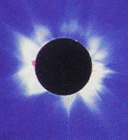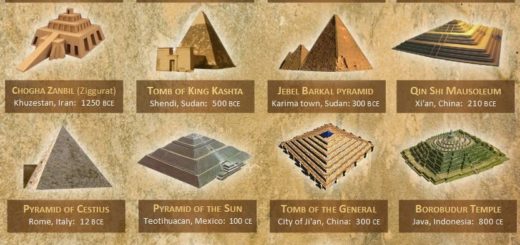How Solar Eclipses Work

A solar eclipse is a celestial phenomenon that does not occur very often, but they are fascinating to watch when they do. On those rare occasions when you are in the right place at the right time for a full solar eclipse, it is amazing.
In this article, we will see what happens during a solar eclipse and how you can observe this incredible event safely.
What Is a Solar Eclipse?
A solar eclipse occurs when the moon passes in a direct line between the Earth and the sun. The moon’s shadow travels over the Earth’s surface and blocks out the sun’s light as seen from Earth.
Because the moon orbits the Earth at an angle, approximately 5 degrees relative to the Earth-sun plane, the moon crosses the Earth’s orbital plane only twice a year. These times are called eclipse seasons, because they are the only times when eclipses can occur. For an eclipse to take place, the moon must be in the correct phase during an eclipse season; for a solar eclipse, it must be a new moon. This condition makes solar eclipses relatively rare.
The moon’s shadow has two parts: a central region (umbra) and an outer region (penumbra). Depending upon which part of the shadow passes over you, you will see one of three types of solar eclipses:
Total – The entire central portion of the sun is blocked out.
Partial – Only part of the sun’s surface is blocked out.
Annular – Only a small, ring-like sliver of light is seen from the sun’s disc.
If the umbra passes over you, the entire central portion of the sun will be blocked out. You will see a total solar eclipse, and the sky will darken as if it were night time. During a total solar eclipse, you can see the sun’s outer atmosphere, called the corona. In fact, this is the only time that you can see the corona, which is why astronomers get so excited when a total eclipse is about to occur. Many astronomers travel the world chasing eclipses.
If the penumbra passes over you, only part of the sun’s surface will be blocked out. You will see a partial solar eclipse, and the sky may dim slightly depending on how much of the sun’s disc is covered.
In some cases, the moon is far enough away in its orbit that the umbra never reaches the Earth at all. In this case, there is no region of totality, and what you see is an annular solar eclipse. In an annular eclipse, only a small, ring-like sliver of light is seen from the sun’s disc (“annular” means “of a ring”).
How to Watch a Solar Eclipse
Never look at the sun directly — doing so can damage your eyes. The best way to observe the sun is by projecting the image. Here is one way to project the sun’s image:
Get two pieces of cardboard (flaps from a box, backs of paper tablets).
With a pin or pencil point, poke a small hole in the center of one piece (no bigger than the pin or pencil point).
Take both pieces in your hand.
Stand with your back to the sun.
In one hand, hold the piece with the pinhole; place the other piece (the screen) behind it.
The sunlight will pass through the pinhole and form an image on the screen (see How does a pinhole camera work? for details on this process).
Adjust the distance between the two pieces to focus and change the size of the image.
Enjoy observing!
For more information on solar eclipses and related topics, check out the links that follow.



 Creators of mankind
Creators of mankind Description of “Tall white aliens”
Description of “Tall white aliens” Where they came from?
Where they came from? About hostile civilizations
About hostile civilizations The war for the Earth
The war for the Earth “Tall white aliens” about eternal life
“Tall white aliens” about eternal life Video: “Nordic aliens”
Video: “Nordic aliens” Aliens
Aliens Alien encounters
Alien encounters The aliens base
The aliens base UFO
UFO Technology UFO
Technology UFO Underground civilization
Underground civilization Ancient alien artifacts
Ancient alien artifacts Military and UFO
Military and UFO Mysteries and hypotheses
Mysteries and hypotheses Scientific facts
Scientific facts


















